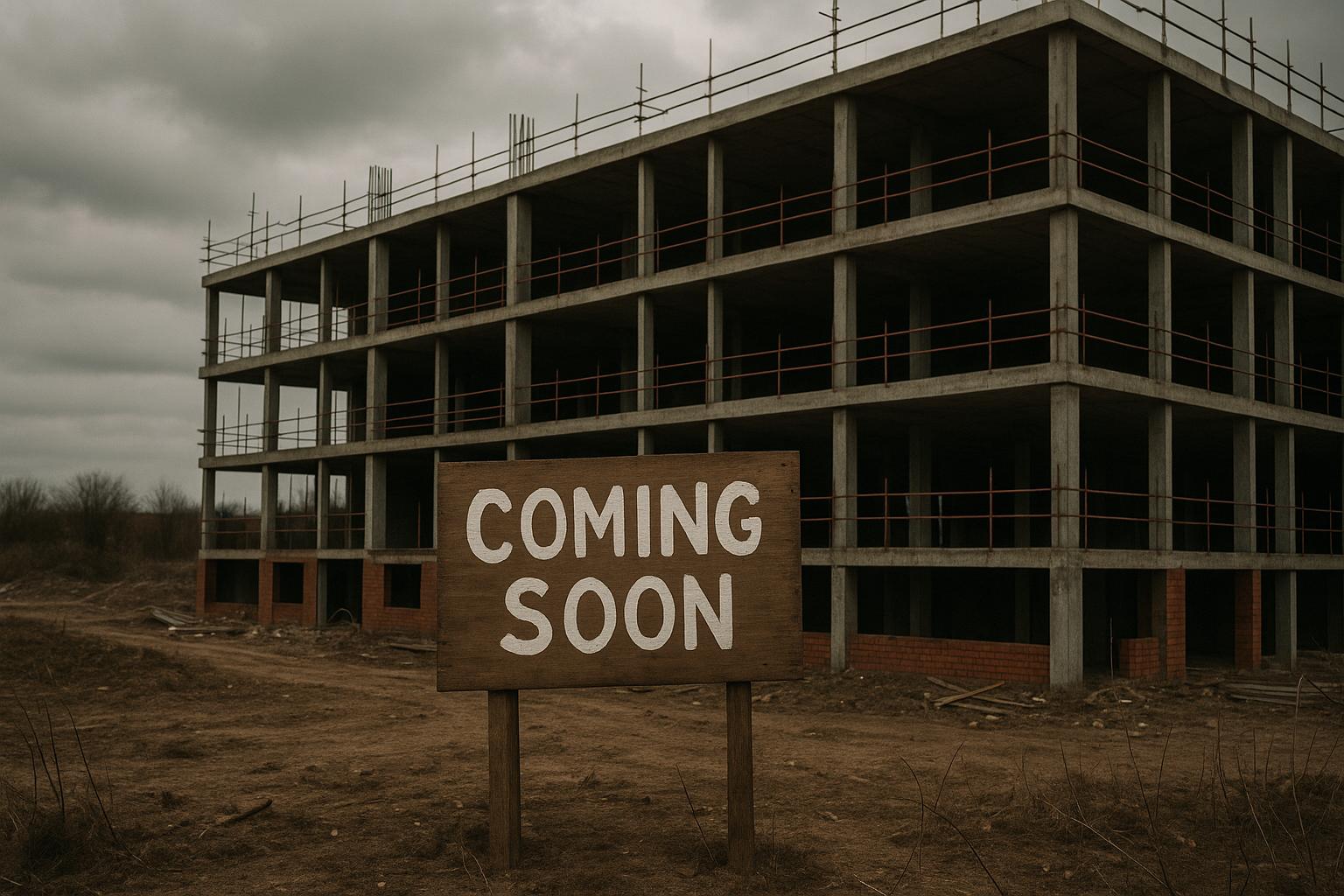The UK government has reaffirmed its commitment to building 1.5 million new homes over the next five years, describing the pledge as a firm goal rather than a mere aspiration. Housing Secretary Michael Gove told the BBC during a visit to a development site near Houghton Regis in Bedfordshire that the government would remove barriers slowing construction and ensure that developers proceed quickly. Gove outlined plans for an "acceleration package" aimed at speeding up the approval of planning applications and putting "spades in the ground" to get housing projects underway.
Gove warned that developers who delayed construction would face sanctions, stressing that building swiftly is in their commercial interests. He added confidence that the partnership between the government and builders would keep momentum going, with a clear expectation that construction progress would be rapid and substantial.
However, the Home Builders Federation has highlighted industry concerns regarding rising regulatory costs, increased taxes, and delays in planning approvals—all of which complicate the delivery of new homes. For smaller builders such as Garry Dixon, who runs a construction firm in Bedfordshire specialising in residential projects, soaring material costs are a significant challenge. He cited an increase in brick prices from around 75–80p to £1.20 per brick over recent years, illustrating inflation pressures impacting the sector. Dixon also called for increased government investment in training and apprenticeships to secure the skilled labour force needed, although recognising such measures are not a quick remedy to current problems.
The pledge to deliver 1.5 million homes is part of a wider government housing strategy promising the biggest boost in affordable housing in a generation. Officials have committed £2 billion to construct up to 18,000 affordable homes by 2029, with construction set to begin in 2027. This funding forms a core part of efforts to tackle the country’s housing crisis while stimulating economic growth, according to reports.
In parallel, the government is undertaking a sweeping overhaul of the planning system, aimed at cutting delays in approvals and unlocking sites for development. Prime Minister Keir Starmer has identified the current planning system as a major barrier to the much-needed expansion in housing supply. Key reforms will prioritise the use of brownfield land and involve reviewing green belt boundaries to ensure sufficient space for new homes, a move expected to accelerate construction timelines substantially.
As part of the drive to build more homes, the government is also encouraging community-led housing projects with a £20 million funding boost. This initiative supports local people in designing and building homes that meet their specific needs, fostering greater local involvement in solving housing shortages.
The scale of ambition is underscored by the government's plan to decide on at least 150 major infrastructure projects during the current Parliament. Alongside housing, this includes green infrastructure such as gigafactories and solar farms, signalling a broader commitment to sustainable development.
Furthermore, more than 100 locations across England are contenders for designation as new towns, following a model that shaped post-war housing expansion. These new communities are expected to deliver at least 40% affordable housing, addressing not only quantity but also quality and accessibility.
Senior ministers have publicly expressed confidence that the 1.5 million homes target will be met, aligning with the government’s broader housing strategy which includes expanded funding for affordable and social rent homes. This demonstrates a sustained political focus on rectifying the housing shortage and fulfilling election promises.
Nevertheless, the construction sector faces ongoing challenges in balancing cost pressures, regulatory requirements, and skill shortages. The success of the government’s ambitious housebuilding targets will hinge on resolving these issues swiftly to convert policy commitments into tangible homes for the public.
📌 Reference Map:
- Paragraph 1 – [1], [6]
- Paragraph 2 – [1], [4]
- Paragraph 3 – [1]
- Paragraph 4 – [4], [6]
- Paragraph 5 – [5]
- Paragraph 6 – [2]
- Paragraph 7 – [3], [7]
- Paragraph 8 – [6], [1]
Source: Noah Wire Services
